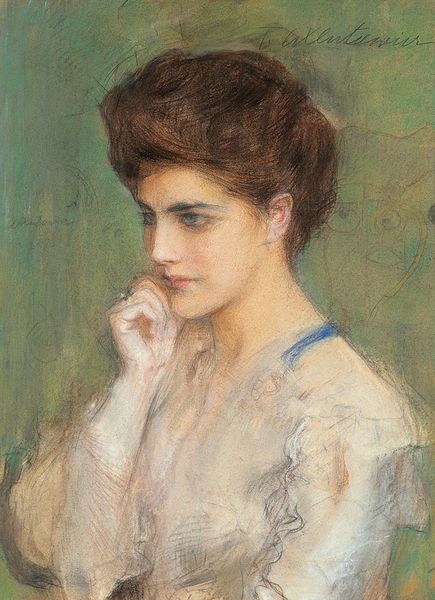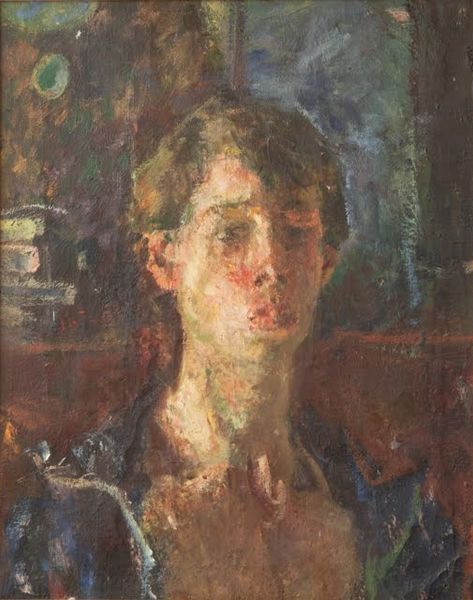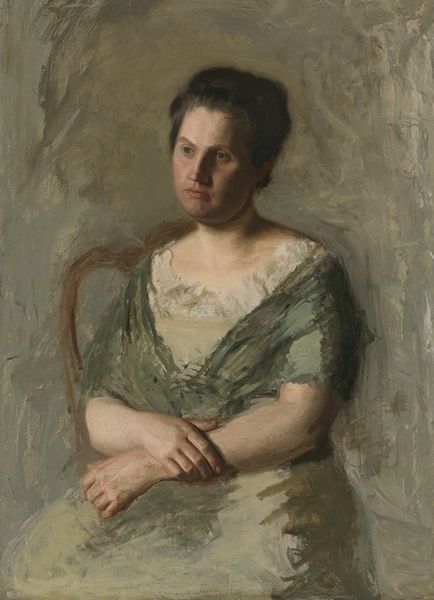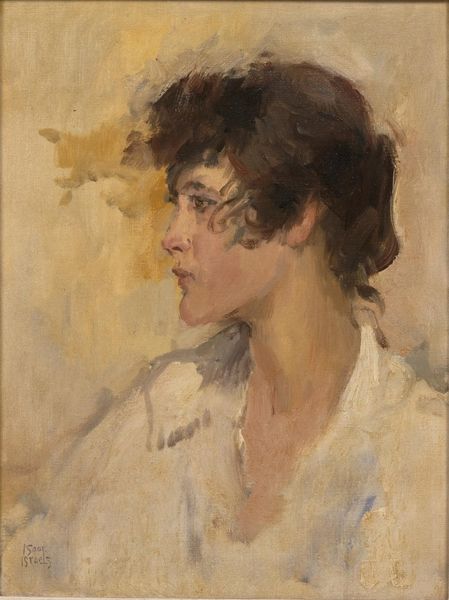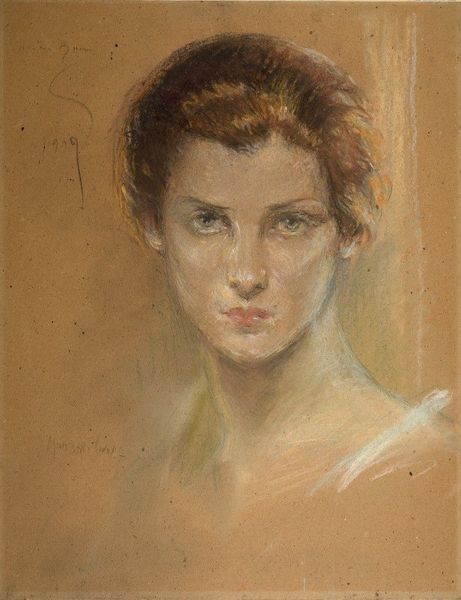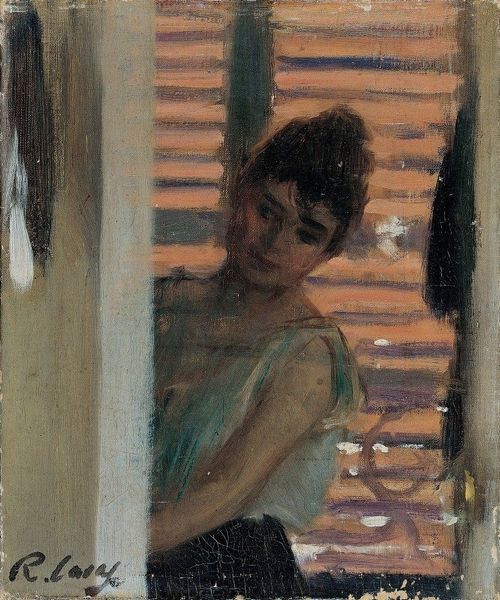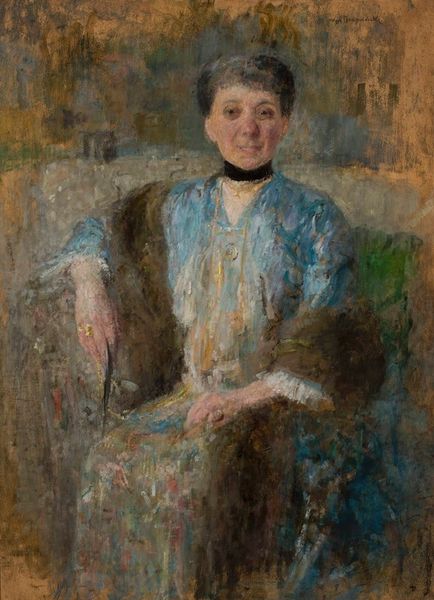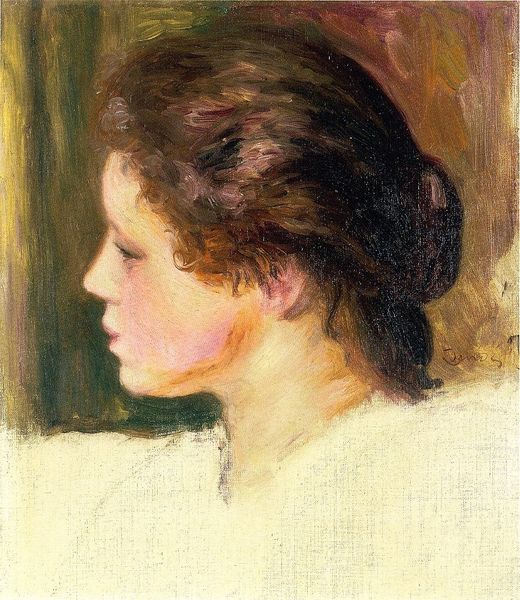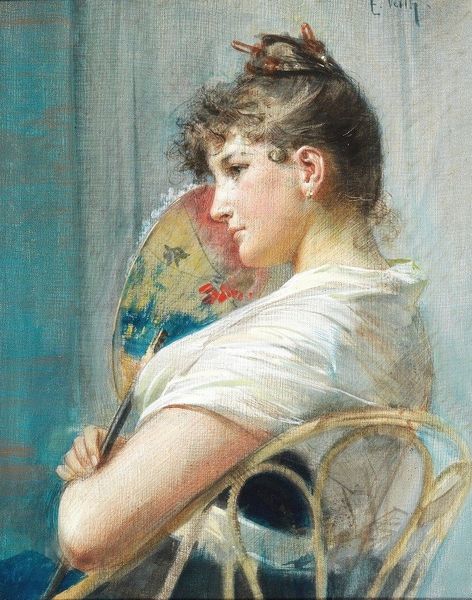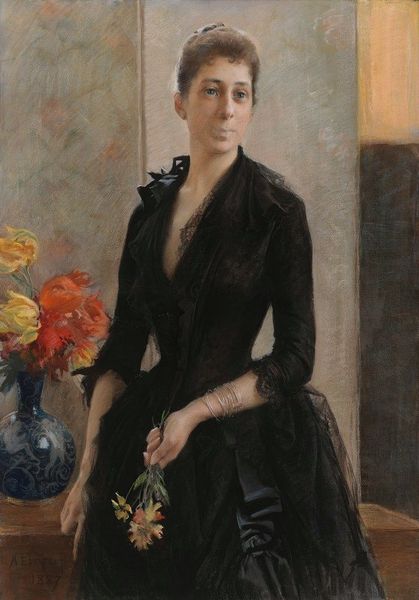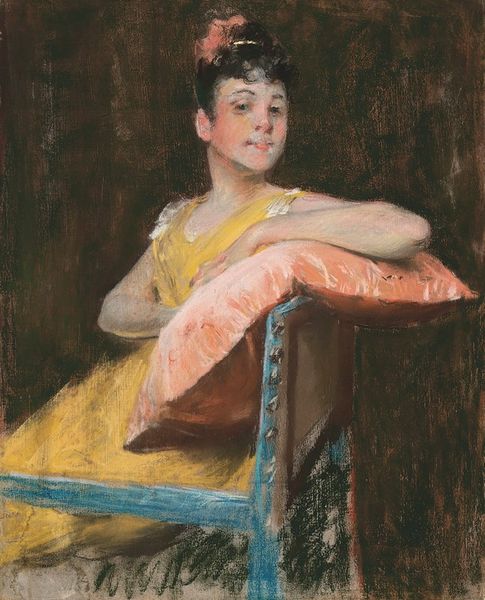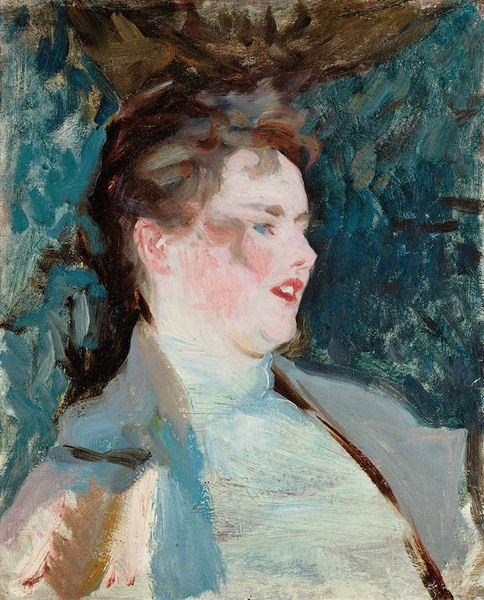
Copyright: Public Domain: Artvee
Curator: Let's turn our attention to Anders Zorn's "Portrait of a Lady in a Drawing Room," painted in 1887 using oil on canvas. Zorn, a master of Impressionism and known for his portraits and genre scenes, captures a moment of quiet intimacy. Editor: My initial impression is one of subtle grace, softened edges, and nuanced tonality. The hazy backdrop really focuses your attention on the sitter, wrapped in what seems to be a pale stole, conveying quiet confidence and perhaps just a touch of ennui. Curator: Absolutely, and notice how the drawing-room setting—implied rather than precisely defined—creates a psychological landscape. The blurred furniture and decorative objects become more symbolic than literal, evoking a particular class and time period. Editor: The brushwork seems deceptively effortless. He's using a very limited palette here, creams and muted golds balanced with slate blue that lend a tactile quality to the fabrics. He clearly focused on capturing the ephemeral play of light on the surface of everything from the skin of the sitter to the fluffy fur. Curator: I think you’re right to consider this a visual symphony of light and texture, especially in how Zorn evokes domesticity with symbolic hints—that slight trace of a vase and plant against the back right that is merely hinted. He gives the interior life while directing all attention on the subject, inviting us to read into her life. The almost melancholic expression she bears has, undoubtedly, deeper symbolic value than merely her psychological condition in this period. Editor: Her slightly downcast gaze almost meets ours, a deliberate touch I believe invites scrutiny. What could be construed as traditional is, at second glance, very unconventional as a way of connecting our subjectivity to hers. Curator: Yes, Zorn invites contemplation—it's an intersection of public presentation and private musings. She represents a moment in society caught in canvas. Editor: I am struck by the careful balance Zorn achieves in capturing not only a portrait, but in using abstraction to communicate an inner life, to be fair I came here seeking an image. Curator: I leave more intrigued than before, which feels like Zorn’s greatest intention.
Comments
No comments
Be the first to comment and join the conversation on the ultimate creative platform.
